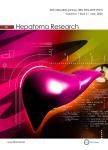Circulating tumor DNAs and non-coding RNAs as potential biomarkers for hepatocellular carcinoma diagnosis, prognosis and response to therapy
作者机构:Department of MorphologySurgery and Experimental MedicineUniversity of FerraraFerrara 44121Italy Department of Molecular MedicineSchool of Advanced Technologies in MedicineTehran University of Medical SciencesTehran 11369Iran Department of Life Sciences and BiotechnologiesUniversity of FerraraFerrara 44121Italy
出 版 物:《Hepatoma Research》 (肝癌研究(英文版))
年 卷 期:2019年第5卷第2期
页 面:12-33页
学科分类:1002[医学-临床医学] 100214[医学-肿瘤学] 10[医学]
主 题:Liquid biopsy hepatocellular carcinoma circulating tumor DNA non-coding RNA diagnosis prognosis therapy response
摘 要:Hepatocellular carcinoma(HCC)is the second leading cause of cancer-related deaths worldwide and despite improvement in therapeutic approaches,prognosis remains *** can be partly attributed to the fact that the majority of HCCs are diagnosed at intermediate or advanced *** of circulating biomarkers able to detect HCC at early stages could improve patients *** present,however,alpha fetoprotein or des-g-carboxyprothrombin are unable to reliably detect HCC at early stages and better circulating biomarkers are *** tumor DNA(ctDNA)and non-coding RNAs(ncRNAs)are emerging as promising biomarkers to achieve the *** and epigenetic alterations in ctDNA allow to pinpoint tumor-specific biomarkers,reveal tumor heterogeneity,help monitor tumor evolution over time and assess therapy *** remains to be fully evaluated the possibility of detecting these biomarkers at early tumor *** ncRNAs are quantitative biomarkers with potential use in diagnostic,prognostic and predictive clinical *** may help to reveal HCC at early ***,because of heterogeneous and sometimes conflicting reported results,they still require validation and standardization of pre-analytical and analytical approaches before clinical applications could be envisaged.



